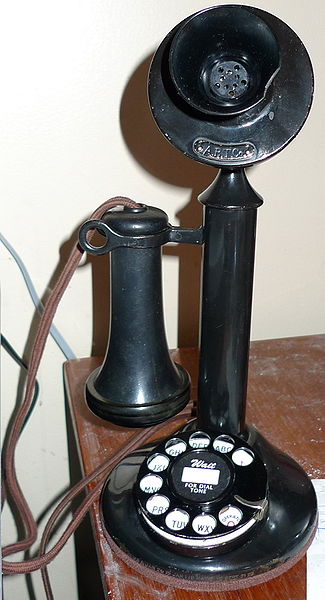Getting Tough with Cyberinsurance

I’ve been hearing a lot of claims recently about how companies are starting to rely more and more on cyberinsurance policies to cover them in the event of a breach or other form of disaster. While I’m a fan of insurance policies in general I think the companies trying to rely on these payouts to avoid doing any real security work is going to be a big surprise to them in the future.
Due Diligence
The first issue that I see is that companies are so worried about getting breached that they think taking out big insurance policies are the key to avoiding any big liability. Think about an organization that holds personally identifiable information (PII) and how likely it is that they would get sued in the event of a breach. The idea is that cyberinsurance would pay out for the breach and be used as a way to pay off the damages in a lawsuit.
The issue I have with this is that companies are expecting to get paid. They see cyberinsurance as a guaranteed payout instead of a last resort. In the initial days of taking out these big policies the insurers were happy to pay out Continue reading
Saying “Yes” the Right Way

If only I had known how hard it was to say “no” to someone. Based on the response that my post about declining things had gotten I’d say there are a lot of opinions on the subject. Some of them were positive and talked about how hard it is to decline things. Others told me I was stupid because you can’t say no to your boss. I did, however, get a direct message from Paul Lampron (@Networkified) that said I should have a follow up post about saying yes in a responsible manner.
Positively Perfect
The first thing you have to understand about the act of asking something is that we’re not all wired the same way when it comes to saying yes. I realize that article is over a decade old at this point but the ideas in it remain valid, as does this similar one from the Guardian. Depending on your personality or how you were raised you may not have the outcome you were expecting when you ask.
Let me give you a quick personal example. I was raised with a southern style mentality that involves not just coming out and asking for something. You Continue reading
The Silver Lining of Cisco Live

Cisco Live 2022 Attendees by the big sign
Cisco Live was last week and it was an event full of both relief and worry. Having not seen any of my friends and colleagues during the Geek Summer Camp for since 2019 I was excitedly anticipating how things would go this year. While I was thrilled to see everyone in real life again there were also challenges that presented themselves by the end of the event that we need to discuss as well.
I could spend volumes detailing every little thing that went on but no one really wants to read that kind of discussion. I’ll just summarize some the stuff that I liked, some of it that I didn’t, and some bigger things that everyone needs to think about.
What Worked for Me
I was happy to once more be a part of the CCIE Advisory Council. We have been meeting via Webex for the entire pandemic but there’s just something about being in a room together that fosters conversation and sharing. The ideas that we discussed are going to have a positive impact on the program as we look at what the future of certifications will be. There’s a Continue reading
Practice Until You Can’t Get It Wrong

One of the things that I spend a lot of my time doing it teaching and training. Not the deeply technical stuff like any one of training programs out there or even the legion of folks that are doing entry-level education on sites like Youtube. Instead, I spend a lot of my time bringing new technologies to the fore and discussing how they impact everyone. I also spend a lot of time with youth and teaching them skills.
One of the things that I’ve learned over the years is that it’s important to not only learn something but to reinforce it as well. How much we practice is just as important as how we learn. We’re all a little guilty of doing things just enough to be proficient without truly mastering a skill.
Hours of Fun
You may have heard of the rule proposed by Malcolm Gladwell that it takes 10,000 hours to become an expert at something. There’s been a lot of research debunking this “rule of thumb”. In fact it turns out that the way you practice and your predisposition to how you learn has a lot do to with the process as well.
When I’m teaching youth, Continue reading
Friday Thoughts Pre-Cisco Live

It’s weird to think that I’m headed out to Cisco Live for the first time since 2019. The in-person parts of Cisco Live have been sorely missed during the pandemic. I know it was necessary all around but I didn’t realize how much I enjoyed being around others and learning from the community until I wasn’t able to do it for an extended period of time.
Now we’re back in Las Vegas and ready to take part in something that has been missed. I’ve got a busy lineup of meetings with the CCIE Advisory Council and Tech Field Day Extra but that doesn’t mean I’m not going to try and have a little fun along the way. And yes, before you ask, I’m going to get the airbrush tattoo again if they brought the artist back. It’s a tradition as old as my CCIE at this point.
What else am I interested in?
- I’m curious to see how Cisco responds to their last disappointing quarter. Are they going to tell us that it was supply chain? Are they going to double down on the software transition? And how much of the purchasing that happened was pull through? Does that mean Continue reading
The Tyranny of Technical Debt, Numerically

A Candlestick Phone (image courtesy of WIkipedia)
This week on the Gestalt IT Rundown, I talked about the plan by Let’s Encrypt to reuse some reserved IP address space. I’ve talked about this before and I said it was a bad idea then for a lot of reasons, mostly related to the fact that modern operating systems are coded not to allow 240/4 as a valid address space, for example. Yes, I realize that when the address space was codified back in the early days of the Internet that decisions were made to organize things and we “lost” a lot of addresses for experimental reasons. However, this is not the only time this has happened. Nor is it the largest example. For that, we need to talk about the device that you’re very likely reading this post on right now: your phone.
By the Numbers
We’re going to be referring to the North American Numbering Plan (NANP) in this post, so my non-US readers are going to want to click that link to understand how phone numbering works in the US. The NANP was devised back in the 1940s by AT&T as a way to assign numbers to the Continue reading
Mind the Air Gap

I recently talked to some security friends on a CloudBytes podcast recording that will be coming out in a few weeks. One of the things that came up was the idea of an air gapped system or network that represents the ultimate in security. I had a couple of thoughts that felt like a great topic for a blog post.
The Gap is Wide
I can think of a ton of classical air gapped systems that we’ve seen in the media. Think about Mission: Impossible and the system that holds the NOC list:

Makes sense right? Totally secure unless you have Tom Cruise in your ductwork. It’s about as safe as you can make your data. It’s also about as inconvenient as you can make your data too. Want to protect a file so no one can ever steal it? Make it so no one can ever access it! Works great for data that doesn’t need to be updated regularly or even analyzed at any point. It’s offline for all intents and purposes.
Know what works great as an air gapped system? Root certificate authority servers. Even Microsoft agrees. So secure that you have to dig it out of storage Continue reading
Broadening Your Horizons, or Why Broadcom Won’t Get VMware

You might have missed the news over the weekend that Broadcom is in talks to buy VMware. As of right now this news is still developing so there’s no way of knowing exactly what’s going to happen. But I’m going to throw my hat into the ring anyway. VMware is what Broadcom really wants and they’re not going to get it.
Let’s break some of this down.
Broad Street
Broadcom isn’t just one of the largest chip manufactures on the planet. Sure, they make networking hardware that goes into many of the products you buy. Yes, they do make components for mobile devices and access points and a whole host of other things, including the former Brocade fibre channel assets. So they make a lot of chips.
However, starting back in November 2018, Broadcom has been focused on software acquisitions. They purchased CA Technologies for $19 billion. They bought Symantec the next year for $10 billion. They’re trying to assemble a software arm to work along with their hardware aspirations. Seems kind of odd, doesn’t it?
Ask IBM how it feels to be the dominant player in mainframes. Or any other dominant player in a very empty market. It’s lonely Continue reading
Quality To Be Named Later

First off, go watch this excellent video from Ken Duda of Arista at Networking Field Day 28. It’s the second time he’s knocked it out of the park when it comes to talking about code quality:
One of the things that Ken brings up in this video that I thought would be good to cover in a bit more depth is the idea of what happens to the culture of your organization, specifically code quality, when you acquire a new company. Every team goes through stages of development from formation through disagreement and finally to success and performance. One of the factors that can cause a high-performing team to regress back to a state of challenges is adding new team members to the group.
Let’s apply this lesson to your existing code infrastructure. Let’s say you’ve spent a lot of time building the best organization that has figured out and your dev teams are running like a well-oiled machine. You’re pushing out updates left and right and your users are happy. Then, you buy a company to get a new feature or add some new blood to the team. What happens when that new team comes on-board? Are they going Continue reading
Friday Thoughts on the Full Stack

It’s been a great week at Networking Field Day 28 this week with some great presentations and even better discussions outside of the room. We recorded a couple of great podcasts around some fun topics, including the Full Stack Engineer.
Some random thoughts about that here before we publish the episode of the On-Premise IT Roundtable in the coming weeks:
- Why do you need a full stack person in IT? Isn’t the point to have people that are specialized?
- Why does no one tell the developers they need to get IT skills? Why is it more important for the infrastructure team to learn how to code?
- We see full stack doctors, which are general practitioners. Why are there no full stack lawyers or full stack accountants?
- If the point of having a full stack understanding is about growing non-tech skills why not just say that instead?
- There’s value in having someone that knows a little bit about everything but not too much. But that value is in having them in a supervisor role instead of an operations or engineering role. Do you want the full stack doctor doing brain surgery? or do you want him to refer you to a Continue reading
Ease of Use or Ease of Repair

Have you tried to repair a mobile device recently? Like an iPad or an MacBook? The odds are good you’ve never even tried to take one apart, let alone put in replacement parts. Devices like these are notorious to try and repair because they aren’t designed to be fixed by a normal person.
I’ve recently wondered why it’s so hard to repair things like this. I can recall opening up my old Tandy Sensation computer to add a Sound Blaster card and some more RAM back in the 90s but there’s no way I could do that today, even if the devices were designed to allow that to happen. In my thinking, I realized why that might be.
Build to Rebuild
When you look at the way that car engine bays were designed in the 80s and 90s you might be surprised to see lots of wasted space. There’s room to practically crawl in beside the engine and take a nap. Why is that? Why waste all that space? Well, if you’re a mechanic that wants to get up close and personal with some part of the engine you want all the space you can find. You’d rather waste a Continue reading
In Defense of Subscriptions

It’s not hard to see the world has moved away from discrete software releases to a model that favors recurring periodic revenue. Gone are the days of a bi-yearly office suite offering or a tentpole version of an operating system that might gain some features down the road. Instead we now pay a yearly fee to use the program or application and in return we get lots of new things on a somewhat stilted cadence.
There are a lot of things to decry about software subscription models. I’m not a huge fan of the way that popular features are put behind subscription tiers that practically force you to buy the highest, most expensive one because of one or two things you need that can only be found there. It’s a callback to the way that cable companies put their most popular channels together in separate packages to raise the amount you’re paying per month.
I’m also not a fan of the way that the subscription model is a huge driver for profits for investors. If your favorite software program doesn’t have a subscription model just yet you’d better hope they never take a big investment. Because those investors are hungry Continue reading
Helpdesk Skills Fit the Bill

I saw a great tweet yesterday from Swift on Security that talked about helpdesk work and how it’s nothing to be ashamed of:
I thought it was especially important to call this out for my readers. I’ve made no secret that my first “real” job in IT was on the national helpdesk for Gateway Computers through a contractor. I was there for about six months before I got a job doing more enterprise-type support work. And while my skills today are far above what I did when I started out having customers search for red floppy disks and removing helper apps in MSCONFIG, the basics that I learned there are things I still carry with me today.
Rocket Science
Most people have a negative outlook on helpdesk work. They see it as entry-level and not worth admitting to. They also don’t quite understand Continue reading
Fast Friday Thoughts on Leadership

I’m once more taking part in the BSA Wood Badge leadership course for my local council. I enjoy the opportunity to hone my skills when it comes to leading others and teaching them how to train their own leaders. A lot of my content around coaching, mentoring, and even imposter syndrome has come from the lessons I’ve learned during Wood Badge. It sounds crazy but I enjoy taking vacation time to staff something that looks like work because it feels amazing!
A few random thoughts from the week:
- You need a sense of urgency in everything you do. You may not know exactly what’s coming or how to adjust for what needs to be done but you need to be moving with purpose to get it done. Not only does that help you with your vision to make things happen but it encourages others to do the same.
- Team building happens when you’re not focused entirely on the goal. It doesn’t take much for your group to come together but it can only happen when they aren’t charging toward the finish line. Remember that taking a few moments here and there to reinforce the group dynamic can do a lot Continue reading
A Modest Proposal for Cisco Interface Naming

If you’re going to be configuring an interface in a switch, which one are you going to use? The interface has a name and a number based on where it is on the device. The numbering part is fairly easy to figure out. The module number comes first, followed by the slot, and finally the port. In the world of Cisco, which is the one I’m the most familiar with, that means a fixed configuration switch usually has interfaces labeled 0/24, with no module and the slot almost always being zero. With a modular switch the interface would be labeled 2/0/28 to indicate the 28th port on the second line card.
The issue arises when you factor in the first part of the interface naming convention. The nomenclature used in the Cisco world since the beginning of time has been the interface speed. If your interface is a 100Mbit Ethernet interface then the interface name is FastEthernet0/48. If you’re using a 1Gbit interface it’s GigabitEthernet0/48. If it’s a 10Gbit interface it becomes TenGigabitEthernet0/48. It’s a progression of interface speeds. Even if the port is capable of using 10/100/1000 the port is referred to at the highest speed. The 10Gbit ports Continue reading
No Is A Complete Sentence

Has someone asked you to do something recently that you know you don’t have time to do but felt like you needed to do anyway? Or has someone tried to get you to help with something and impressed upon you just how important it is? You probably told them “yes” out of guilt or obligation or some other kind of negative emotion. Sure, you could have declined but you thought about how bad you would feel if someone did the same to you.
Let me tell you clearly. “No” is a complete sentence. It requires no explanation or defense. It is the only thing you need to say when you know you won’t be able to do something no matter how much the other party tries to get you to agree.
Everything Sucking Equally
If you know anything about QoS, you know that once a given circuit reaches the limitation for bandwidth you can no long send additional information. What’s counterintuitive about this is most people would assume that if you try to squeeze one more stream or packet into the mix that only that last packet would be affected and everything else would work perfectly fine, right? Only one Continue reading
Trust Will Do You In
loc
If you’re a fan of the Gestalt IT Rundown that I do every week on the Gestalt IT YouTube channel, you have probably heard about the recent hacks of NVIDIA and Samsung. The original investigation into those hacks talked about using MDM platforms and other vectors to gain access to the information that was obtained by the hacking groups. An interesting tweet popped up on my feed yesterday that helped me reframe the attacks:
It would appear that the group behind these attacks are going after their targets the old fashioned way. With people. For illustration, see XKCD from 2009:

The Weakest Links
People are always the weakest link in any security situation. They choose to make something insecure through bad policy or by trying to evade the policy. Perhaps they are trying to do harm to the organization or even try to shine a light on Continue reading
AI is a Promotion

When I worked at IBM as an intern, part of my job was writing a deployment script to help make our lives easier when installing new ThinkPads. In order to change an MTU setting on the token ring PCMCIA cards (long story), I had to write a script that iterated through all the possible combinations of adapters in the registry to find the one I was looking for and change the value.
Now, I was 22 at the time and green behind the ears, especially when it came to programming. I finally figured out that the most efficient way to do this in the language that I was using was a very deep nested if statement. It wasn’t my best work but it operated properly. I mentioned this to my mentors on my team with a remark of how hard it was to understand the logic at first. My comment was “You know, if it’s hard to read for anyone else then I never have to worry about gettin fired.”
To which the response was, “Yes, but you can never be promoted either.”
That sage wisdom brings me to the modern world and how AI can fix that Continue reading
The Value of Old Ideas

I had a fun exchange on Twitter this week that bears some additional thinking. Emirage (@Emirage6) tweeted a fun meme about learning BGP:
I retweeted it and a few people jumped in the fun, including a couple that said it was better to configure BGP for reasons. This led to a blog post about routing protocols with even more great memes and a good dose of reality for anyone that isn’t a multi-CCIE.
Explain It Like I’m Five
I want you to call your mom and explain BGP to her. Go on and do that now because I’m curious to see how you’d open that conversation. Unless your mom is in networking already I’m willing to bet you’re going to have to start really, really basic. In fact, given the number of news organizations that don’t even know what the letters in the acronym stand for I’d guess you are going to have a hard time talking about the path selection process or leak maps or how sessions are established.
Now, try that same Continue reading
Technical Debt or Underperforming Investment?

In this week’s issue of the Packet Pushers Human Infrastructure newsletter, there was an excellent blog post from Kam Lasater about how talking about technical debt makes us sound silly. I recommend you read the whole thing because he brings up some very valid points about how the way the other departments of the organization perceive our issues can vary. It also breaks down debt in a very simple format that takes it away from a negative connotation and shows how debt can be a leverage instrument.
To that end, I want to make a modest proposal to help the organization understand the challenges that IT faces with older systems and integration challenges. Except we need some new branding. So, I propose we start referring to technical debt as “underperforming technical investments”.
I’d Buy That For A Dollar
Technical debt is just a clever way to refer to the series of layered challenges we face from decisions that were made to accomplish tasks. It’s a burden we carry negatively throughout the execution of our job because it adds extra time to the process. We express it as debt because it’s a price that must be paid every time we need Continue reading
